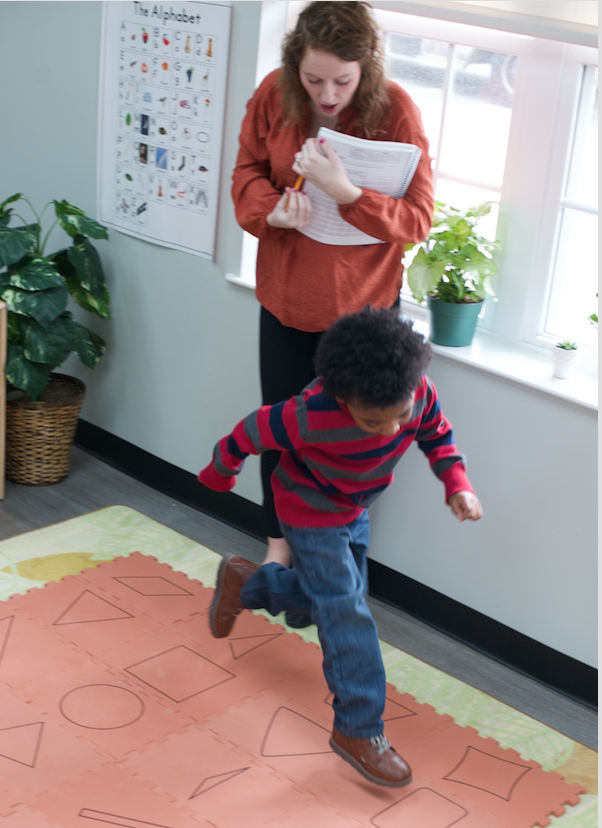Shape Walk
Guide Families to Teach Children about Shapes—While Getting Exercise!

Like you, we know the importance of teaching children through play. In fact, children experience many learning opportunities while playing. Just think: they naturally mathematize everyday activities, such as building with blocks, creating art, singing songs, and working puzzles.
That’s why Connect4Learning finds opportunities to teach and explore math concepts with children in everyday play and activities.
Share the following at-home activity with families to demonstrate how teaching and learning math can be fun, active and educational.
Shape Walk Activity for Families
Children are natural-born explorers who learn best through play. Did you know they can learn about an important preschool math skill— geometric shapes—while playing?
Try it out by taking your child for a shape walk—or hop!
Because children naturally see shapes in nature and objects all around them, you can encourage them to closely observe differences in shapes, including the number and length of sides and angles.
- Create your shapes. Cut out large (12 to 15 inches in diameter or width) geometric shapes from paper, cardboard, newspaper, fabric, or other materials. Include a square, circle, oval, rectangle, and triangle. Children can cut them out if the material isn’t too thick or stiff, such as cardboard from boxes.
- Spread out the shapes on the floor. Tell your child that you will name a shape, and he should step only on that shape.
- Show what you know. As you call out a shape and your child steps on it, ask her to say how she knows it is that shape. (Children have practiced this skill in school.) How do you know that’s a triangle? Triangles have three sides and three angles, like this shape.
- Celebrate and support. Applaud your child’s response and fill in any essential details, including the number of sides and angles, that all the sides are the same length (for squares), that there are no angles (for circle, oval), etc.
- Try again. Continue with all the shapes a couple of times. Ask your child to name each shape as you point to them.
For More Challenge
Name two or three shapes and ask your child to step on them in the correct order. Example: Square – triangle.
Extend the Learning
Encourage your child to continue playing the game with siblings, stuffed animals, action figures, or dolls. And, you can provide your child with straws, strips of paper or string, popsicle sticks, or other materials to make more geometric shapes.



